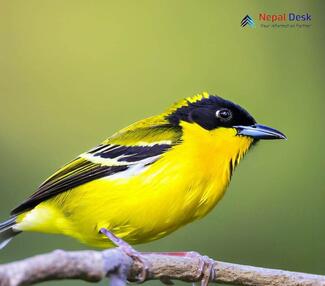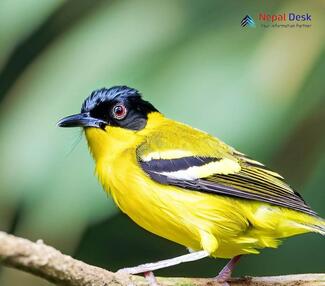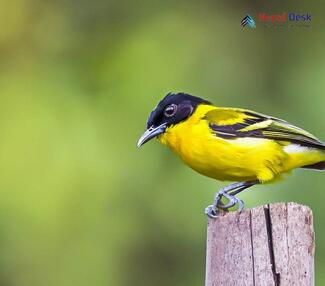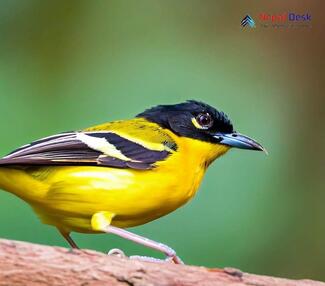Nepal, known for its breathtaking landscapes and diverse wildlife, is the home of many captivating bird species, including the charming Common Iora (Aegithina tiphia). Its documented history dates back to 1747 when British naturalist George Edwards described the common iora in his publication, A Natural History of Uncommon Birds, referring to it as "The Green Indian Fly-Catcher". Later on, in 1758, Swedish scientist Carl Linnaeus mentioned the common iora in his renowned book Systema Naturae within the Motacilla genus. He also created the scientific name Motacilla tiphia, acknowledging the contribution of Edwards. Today, the Common Iora resides within the Aegithina genus, a change made by French ornithologist Louis Jean Pierre Vieillot in 1816. The term Aegithina originates from ancient Greek legends about a mystical bird. The specific name tiphia's origin remains uncertain – it may be linked to Greek mythology or even represent a tiara.
Spread across South and Southeast Asia, including Nepal, this tiny yet energetic bird has captured the admiration of birdwatchers, photographers, and nature enthusiasts alike. Let us explore further into the intriguing world of the Common Iora situated in Nepal's awe-inspiring natural environment.
Characteristics of the Common Iora
The Common Iora is a small passerine bird, measuring just 15 cm in length and weighing around 9-12 grams. Males and females exhibit sexual dimorphism – meaning they have different physical appearances. Male Ioras flaunt vibrant colors, featuring bright yellow underparts and greenish wings with white bars, while females don a more muted olive-green plumage, blending seamlessly into their surroundings.
As skilled aerialists, these beautiful birds are often seen flitting through trees, bushes, and shrubs with bursts of acrobatic maneuvers. Their melodious calls add a soundtrack to Nepal’s diverse landscapes as they communicate with other birds or claim their territory.
Habitat and Distribution in Nepal
The Common Iora thrives in various habitats across Nepal – from open forests and woodlands to gardens and agricultural areas. They tend to inhabit the lowlands, ranging in altitudes up to 1,500 meters above sea level.
Birdwatchers can spot these charming avians throughout much of Southern Nepal - particularly in national parks such as Chitwan National Park and Bardia National Park. These protected areas offer prime opportunities for observing not only the Common Iora but also countless other endemic and migratory bird species.
Conservation Efforts
While not considered endangered or threatened at a global scale, habitat loss due to deforestation poses a significant risk to the Common Iora's survival in certain areas. Nepal has been undertaking extensive reforestation and conservation efforts to support its biodiverse ecosystems. These measures aim to replenish the natural habitats of numerous species, including the Common Iora, and maintain a sustainable balance between human development and nature.
Dive into Birdwatching in Nepal
Witness the captivating presence of the Common Iora and unveil the astonishing biodiversity of Nepal. If birdwatching piques your curiosity, there's no better moment to explore the vibrant world of these feathered beauties. Join guided tours or local birdwatching clubs where many enthusiasts are more than happy to share their insights and introduce others to this enthralling activity.
Observing the Common Iora goes beyond admiring its splendor; it's also a chance to value the abundant flora and fauna living harmoniously together in Nepal. While you venture out on your birdwatching escapades, always keep in mind to show care and respect for these natural environments, ensuring that future generations can also cherish these magnificent creatures.
In summary, the Common Iora of Nepal is a captivating draw for bird lovers worldwide. Discover this remarkable country firsthand - you might find yourself spellbound by these feathered gems gracing its verdant scenery. Wishing you happy birdwatching!




